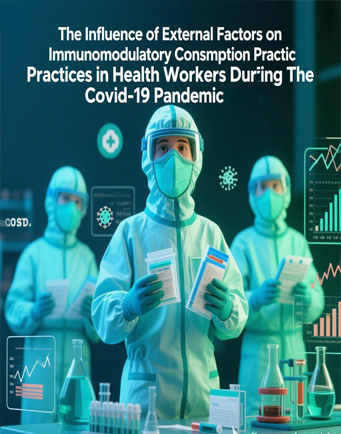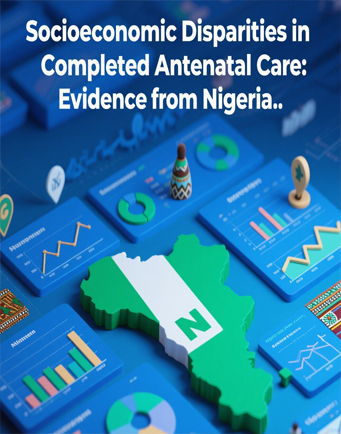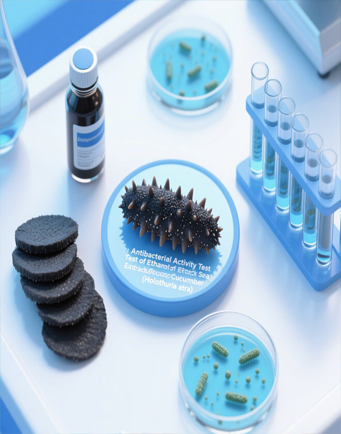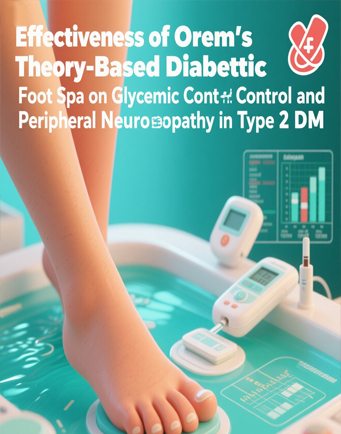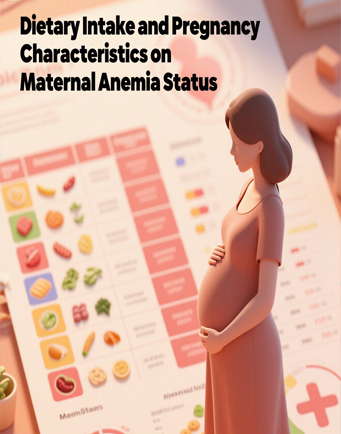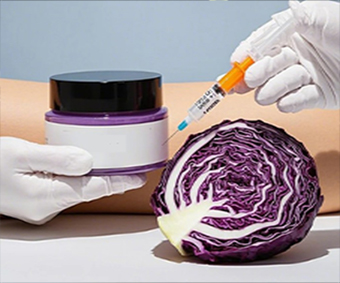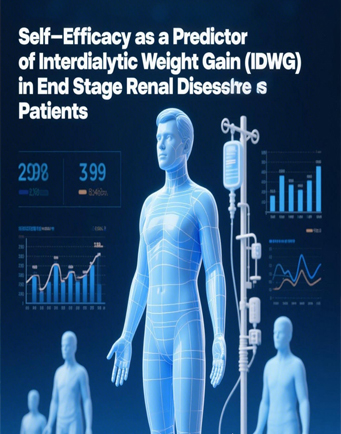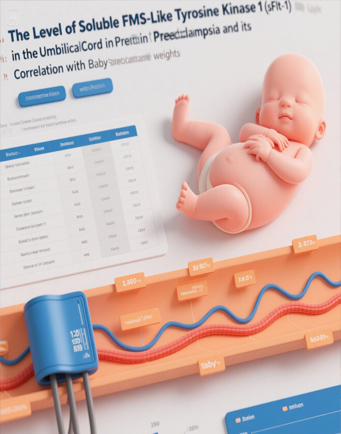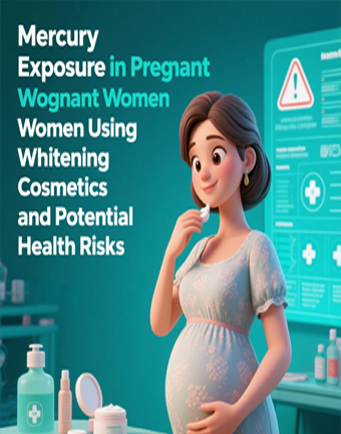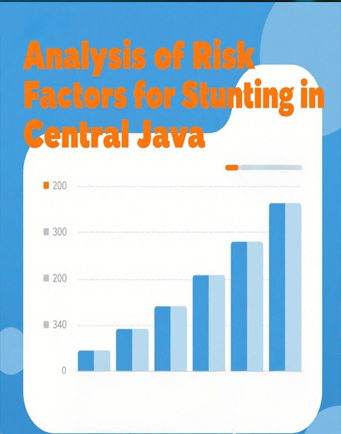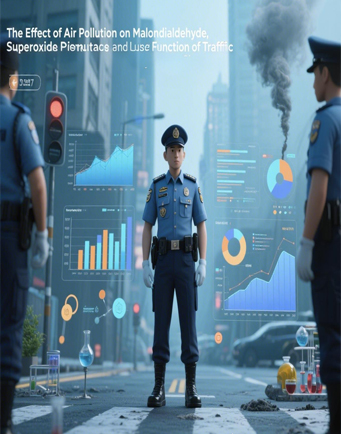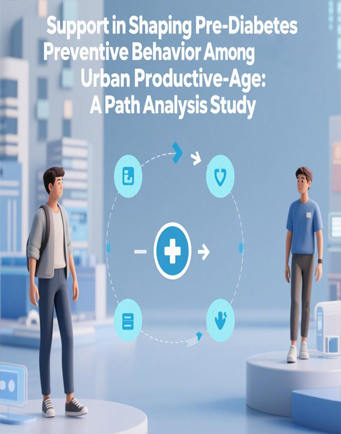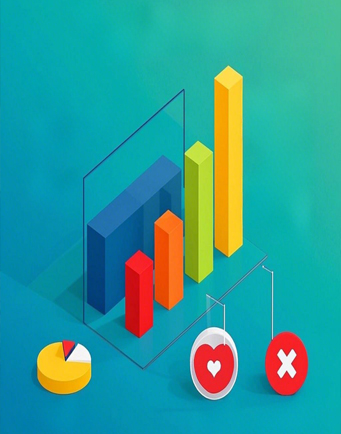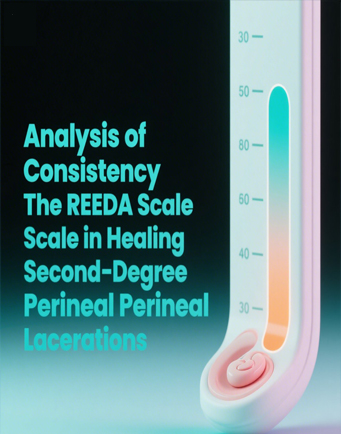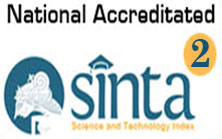Risk Factors Related to Stunting
Downloads
Childhood stunting, or low height for age, continues to be a concern for world health since it raises the possibility of both mortality and growth and development disorders. West Kalimantan province ranks seventh with the highest prevalence of 29.8% by 2021. But little is known about Pontianak's children's stunting risk factors, especially in the UPT Puskesmas Pal Lima (one of the community health centers with a high prevalence of stunting). The study aimed to determine risk factors associated with stunting in the UPT Puskesmas Pal Lima, such as high-risk pregnant women, pregnant women with chronic energy deficiency, communication of educational information about stunting, occupancy density, and age of pregnant women in the UPT Puskesmas Pal Lima. Cross-sectional study design was used. The research was conducted in February-March 2023. The population in this study were all stunted toddlers in the UPT work area of the Pal Lima Health Center. Sampling used quota sampling with all 75 stunted toddlers. Data analysis used univariate and bivariate analysis (chi square test with 95% CI). This research found that 61,3% with high risk pregnant women, 21,3% with chronic energy deficiency, 52% not exposed to information communication and education about stunting, 32% occupancy density were not qualified, 48% risk at age of pregnant mothers, 32% severe stunting and 68% stunting. There was a significant relationship between high-risk pregnant women (p-value = 0,015), pregnant women with chronic energy deficiency (p-value = 0,001), the information communication and education about stunting (p-value = 0,046), occupancy density (p-value = 0,043), and the age of pregnant women (p-value = 0,049), and the incidence of stunting in toddlers in the working area of UPT Puskesmas Pal Lima, West Pontianak District. Based on the results of this study can be used as a basis for the primary prevention of stunting in pregnant women.
Alfarisi, R., Nurmalasari, Y., & Nabilla, S. (2019). Status Gizi Ibu Hamil Dapat Menyebabkan Kejadian Stunting Pada Balita. JKM (Jurnal Kebidanan Malahayati), 5(3), 271-278. https://doi.org/10.33024/jkm.v5i3.1404
Amalia, I. D., Lubis, D. P. U., & Khoeriyah, S. M. (2021). Hubungan Pengetahuan Ibu tentang Gizi Dengan Kejadian Stunting Pada Balita: Relationship Between Mother’s Knowledge on Nutrition and The Prevalence of Stunting on Toddler. Jurnal Kesehatan Samodra Ilmu, 12(2), 146–154. https://doi.org/10.55426/jksi.v12i2.153
Boucot, A., & Poinar Jr., G. (2018). Stunting. Fossil Behavior Compendium, 5, 243–243. https://doi.org/10.1201/9781439810590-c34
Cleopatra, A. B., Fitriangga, A., & Fahdi, F. K. (2018). Faktor – Faktor Yang Berhubungan Dengan Penggunaan Rokok Elektrik Di Wilayah Kecamatan Pontianak Barat. ProNers, 4(1), 1–10.
Cunningham, M. W., & LaMarca, B. (2018). Risk of cardiovascular disease, end-stage renal disease, and stroke in postpartum women and their fetuses after a hypertensive pregnancy. American Journal of Physiology-Regulatory, Integrative and Comparative Physiology, 315(3), R521–R528. https://doi.org/10.1152/ajpregu.00218.2017
Dewey, K. G. (2016). Reducing stunting by improving maternal, infant and young child nutrition in regions such as South Asia: Evidence, challenges and opportunities. Maternal and Child Nutrition, 12, 27–38. https://doi.org/10.1111/mcn.12282
Eka, M. B., Krisnana, I., & Husada, D. (2021). Risk Factors of Stunting Events in Toddlers Aged 24-59 Months. Indonesian Midwifery and Health Sciences Journal, 4(4), 374–385. https://doi.org/10.20473/imhsj.v4i4.2020.374-385
Fall, C. H. D., Sachdev, H. S., Osmond, C., Restrepo-Mendez, M. C., Victora, C., Martorell, R., Stein, A. D., Sinha, S., Tandon, N., Adair, L., Bas, I., Norris, S., Richter, L. M., Barros, F. C., Gigante, D., Hallal, P. C., Horta, B. L., Ramirez-Zea, M., Bhargava, S. K., … Stein, A. (2015). Association between maternal age at childbirth and child and adult outcomes in the offspring: A prospective study in five low-income and middle-income countries (COHORTS collaboration). The Lancet Global Health, 3(7), e366–e377. https://doi.org/10.1016/S2214-109X(15)00038-8
Fitriani, H., R, A. S., & Nurdiana, P. (2020). Risk Factors of Maternal Nutrition Status During Pregnancy to Stunting in Toddlers Aged 12-59 Months. Jurnal Keperawatan Padjadjaran, 8(2), 175–183. https://doi.org/10.24198/jkp.v8i2.1305
Govender, I., Rangiah, S., Kaswa, R., & Nzaumvila, D. (2021). Malnutrition in children under the age of 5 years in a primary health care setting. South African Family Practice, 63(1), a5337. https://doi.org/10.4102/safp.v63i1.5337
Hu, X., & Zhang, L. (2021). Uteroplacental Circulation in Normal Pregnancy and Preeclampsia: Functional Adaptation and Maladaptation. International Journal of Molecular Sciences, 22(16), 8622. https://doi.org/10.3390/ijms22168622
Ibrahim, I. A., Bujawati, E., Syahrir, S., Adha, A. S., & Mujahida, M. (2019). Analisis determinan kejadian Growth failure (Stunting) pada anak balita usia 12-36 bulan di wilayah pegunungan desa Bontongan Kecamatan Baraka Kabupaten Enrekang. Al-Sihah: The Public Health Science Journal, 11(1), 50–64.
Indonesian The Ministry of Health. (2021). Results of the Indonesian Gizi Status Study (SSGI) National level, Province, District/City in 2021. Indonesian The Ministry of Health
Istiningsih, T., & Riyanti, R. (2022). Maternal Risk Factors Against Stunting Balita Aged 12 – 24 Months In Puskesmas Mantangai District of Kapuas Province of Kalimantan. Malahayati Nursing Journal, 4(7), 1828–1838. https://doi.org/10.33024/mnj.v4i7.6673
Khairunisa, R., Mitra, M., Purba, C. V. G., Alamsyah, A., & Abidin, A. R. (2022). Faktor Risiko Ibu pada Saat Hamil dengan Kejadian Stunting pada Anak Balita di Kota Pekanbaru. Jurnal Kesehatan Global, 5(3), 150-160.
le Roux, K., Christodoulou, J., Stansert-Katzen, L., Dippenaar, E., Laurenzi, C., le Roux, I. M., Tomlinson, M., & Rotheram-Borus, M. J. (2019). A longitudinal cohort study of rural adolescent vs adult South African mothers and their children from birth to 24 months. BMC Pregnancy and Childbirth, 19(1), 24. https://doi.org/10.1186/s12884-018-2164-8
Munira, S. L. (2023). Hasil Survei Status Gizi Indonesia (SSGI) 2022. Jakarta: Kementerian Kesehatan Republik Indonesia.
Murti, L. M., Budiani, N. N., & Darmapatni, M. W. G. (2020). Hubungan pengetahuan ibu tentang gizi balita dengan kejadian stunting anak umur 36-59 bulan di Desa Singakerta Kabupaten Gianyar. Jurnal Ilmiah Kebidanan (The Journal Of Midwifery), 8(2), 62-69.
Nabugoomu, J., Seruwagi, G., Corbett, K., Kanyesigye, E., Horton, S., & Hanning, R. (2018). Needs and Barriers of Teen Mothers in Rural Eastern Uganda: Stakeholders’ Perceptions Regarding Maternal/Child Nutrition and Health. International Journal of Environmental Research and Public Health, 15(12), 2776. https://doi.org/10.3390/ijerph15122776
Najah, S., & Darmawi, D. (2022). Hubungan Faktor Ibu Dengan Kejadian Stunting Di Desa Arongan Kecamatan Kuala Pesisir Kabupaten Nagan Raya. Jurnal Biology Education, 10(1), 45-55. https://doi.org/10.32672/jbe.v10i1.4234
Nengsih, Y., & Warastuti, D. (2020). Faktor Risiko Kejadian Stunting Pada Bayi Dan Balita Di Desa Ciambar Kecamatan Ciambar Kabupaten Sukabumi Tahun 2019. Jurnal Kesehatan Dan Kebidanan (Journal of Health and Midwifery), 9(1), 1-11.
Nurhidayati, T., Rosiana, H., & Rozikhan, R. (2020). Usia Ibu Saat Hamil Dan Kejadian Stunting Pada Anak Usia 1-3 Tahun. Midwifery Care Journal, 1(5), 122-126.
Olsa, E. D., Sulastri, D., & Anas, E. (2018). Hubungan sikap dan pengetahuan ibu terhadap kejadian stunting pada anak baru masuk Sekolah Dasar di kecamanatan Nanggalo. Jurnal Kesehatan Andalas, 6(3), 523-529. https://doi.org/10.25077/jka.v6i3.733
Palino, I. L., Majid, R. & Ainurafiq, A. (2017). Determinan Kejadian Stunting pada Balita Usia 12-59 Bulan di Wilayah Kerja Puskesmas Puuwatu Kota Kendari Tahun 2016. Jurnal Ilmiah Mahasiswa Kesehatan Masyarakat Unsyiah, 2(6), 1-12.
Pongrekun, P.S., Sunarsieh & Fatmawati. (2020). Faktor-Faktor Yang Berhubungan Dengan Kejadian Stunting Di Kabupaten Konawe Selatan: Factors That Are Related To Stunting Events In South Konawe District. Jurnal Ilmiah Kebidanan (Scientific Journal of Midwifery), 6(2), 95-104.
Pusmaika, R., Novfrida, Y., Simatupang, E. J., Djami, M. E., & Sumiyati, I. (2022). Hubungan Usia Ibu Saat Hamil dengan Kejadian Stunting Pada Balita di Kabupaten Tangerang. Indonesian Health Issue, 1(1), 49-56. https://doi.org/10.47134/inhis.v1i1.11
Kementerian Kesehatan Republik Indonesia. (2018). Hasil Utama Riset Kesehatan Dasar 2018. Jakarta: Kementerian Kesehatan Republik Indonesia.
Rohmawati, W., Wintoro, P. D., & Sari, T. W. (2020). Hubungan Kekurangan Energi Kronik pada Ibu Hamil dengan Kejadian Stunting di Klaten. MOTORIK Jurnal Ilmu Kesehatan, 3(1), 39–44.
Ruaida, N., & Soumokil, O. (2018). Hubungan status KEK ibu hamil dan BBLR dengan kejadian stunting pada balita di puskesmas Tawiri kota Ambon. Jurnal Kesehatan Terpadu (Integrated Health Journal), 9(2), 1-7. https://doi.org/10.32695/jkt.v2i9.12
Safitri, A., & Djaiman, S. P. H. (2021). Hubungan hipertensi dalam kehamilan dengan kelahiran prematur: Metaanalisis. Media Penelitian dan Pengembangan Kesehatan, 31(1), 27–38. https://doi.org/10.22435/mpk.v31i1.3881
Samiati, Amin F.A. & Ramadhaniah. (2022). Hubungan Pola Asuh, Pendidikan Ibu, Pengetahuan Ibu Dan Riwayat Penyakit Infeksi Dengan Kejadian Stunting Pada Balita Usia 12-24 Bulan Di Wilayah Kerja Puskesmas Rundeng Kota Subulussalam Tahun 2021. Journal of Health and Medical Science, 1(4), 216-223.
Sani, M., Solehati, T., & Hendrawati, S. (2019). Hubungan usia ibu saat hamil dengan stunted pada balita 24-59 bulan. Holistik: Jurnal Kesehatan, 13(4), 284-291.
Saragih, F. L., Simanjuntak, Y. T., & Hutajulu, J. (2020). Hubungan Pengetahuan Keluarga Dengan Tindakan Pencegahan Stunting Di Desa Perk. Aek Tarum Kecamatan Bandar Pulau Kabupaten Asahan Tahun 2020. Jurnal Teknologi Kesehatan Dan Ilmu Sosial (Tekesnos), 2(2), 20-29.
Sari, K., & Sartika, R. A. D. (2021). The effect of the physical factors of parents and children on stunting at birth among newborns in indonesia. Journal of Preventive Medicine and Public Health, 54(5), 309–316. https://doi.org/10.3961/jpmph.21.120
Selvia, D., & Wahyuni, A. (2022). Wahyuni, A. (2021). Manajemen General Anestesi Pada Pasien Splenomegali. Jurnal Kesehatan Saintika Meditory, 4(2), 78-84. http://dx.doi.org/10.30633/jsm.v4i2.1270
Tobing, M. L., Pane, M., & Harianja, E. (2021). Pola Asuh Ibu Dengan Kejadian Stuntingpada Anak Usia 24–59 Bulan di Wilayah Kerja Puskesmas Kelurahan Sekupang Kota Batam. Jurnal Kesehatan Masyarakat, 5(1), 448-465. https://doi.org/10.31004/prepotif.v5i1.1630
UNICEF. (2021). UNICEF-WHO-World Bank: Joint Child Malnutrition Estimates—2021 Edition Interactive Dashboard. UNICEF. Retrieved from https://data.unicef.org/resources/joint-child-malnutrition-estimates-interactive-dashboard-2021
Wanimbo, E., & Wartiningsih, M. (2020). Wanimbo, E., & Wartiningsih, M. (2020). Hubungan karakteristik ibu dengan kejadian stunting baduta (7-24 bulan). Jurnal Manajemen Kesehatan Yayasan RS. Dr. Soetomo, 6(1), 83. https://doi.org/10.29241/jmk.v6i1.300
Wardani, D. K. (2022). Pengaruh Faktor Maternal Ibu terhadap Kejadian Stunting pada Balita Usia 24-59 Bulan di Wilayah kerja UPT Puskesmas Sopaah Kabupaten Pamekasan The Influence of Maternal Factors on The Incidence of Stunting among Toddlers Aged 24–59 Months in Working Area of Sopaah Primary Health Care, Pamekasan District. Media Gizi Kesmas, 11(02), 386-393. https://doi.org/10.20473/mgk.v11i2.2022.386-393
Western Health. (2020). Western Health Research Reports. Western Health.
Widyaningsih, W., & Dewi, I. P. (2021). Hubungan Tekanan Darah Tinggi Dengan Kejadian Stunting Pada Anak. MAHESA: Malahayati Health Student Journal, 1(4), 333-344. https://doi.org/10.33024/mahesa.v1i4.5476
Zahrawani, T. F., Nurhayati, E., & Fadillah, Y. (2022). Hubungan kondisi jamban dengan kejadian stunting di Puskesmas Cicalengka Tahun 2020. Jurnal Integrasi Kesehatan dan Sains (JIKS), 4(1), 1–5. https://doi.org/10.29313/jiks.v4i1.7770
Copyright (c) 2024 JURNAL INFO KESEHATAN

This work is licensed under a Creative Commons Attribution-NonCommercial-ShareAlike 4.0 International License.
Copyright notice
Ownership of copyright
The copyright in this website and the material on this website (including without limitation the text, computer code, artwork, photographs, images, music, audio material, video material and audio-visual material on this website) is owned by JURNAL INFO KESEHATAN and its licensors.
Copyright license
JURNAL INFO KESEHATAN grants to you a worldwide non-exclusive royalty-free revocable license to:
- view this website and the material on this website on a computer or mobile device via a web browser;
- copy and store this website and the material on this website in your web browser cache memory; and
- print pages from this website for your use.
- All articles published by JURNAL INFO KESEHATAN are licensed under the Creative Commons Attribution 4.0 International License. This permits anyone to copy, redistribute, remix, transmit and adapt the work provided the original work and source is appropriately cited.
JURNAL INFO KESEHATAN does not grant you any other rights in relation to this website or the material on this website. In other words, all other rights are reserved.
For the avoidance of doubt, you must not adapt, edit, change, transform, publish, republish, distribute, redistribute, broadcast, rebroadcast or show or play in public this website or the material on this website (in any form or media) without appropriately and conspicuously citing the original work and source or JURNAL INFO KESEHATAN prior written permission.
Permissions
You may request permission to use the copyright materials on this website by writing to jurnalinfokesehatan@gmail.com.
Enforcement of copyright
JURNAL INFO KESEHATAN takes the protection of its copyright very seriously.
If JURNAL INFO KESEHATAN discovers that you have used its copyright materials in contravention of the license above, JURNAL INFO KESEHATAN may bring legal proceedings against you seeking monetary damages and an injunction to stop you using those materials. You could also be ordered to pay legal costs.
If you become aware of any use of JURNAL INFO KESEHATAN copyright materials that contravenes or may contravene the license above, please report this by email to jurnalinfokesehatan@gmail.com
Infringing material
If you become aware of any material on the website that you believe infringes your or any other person's copyright, please report this by email to jurnalinfokesehatan@gmail.com.


